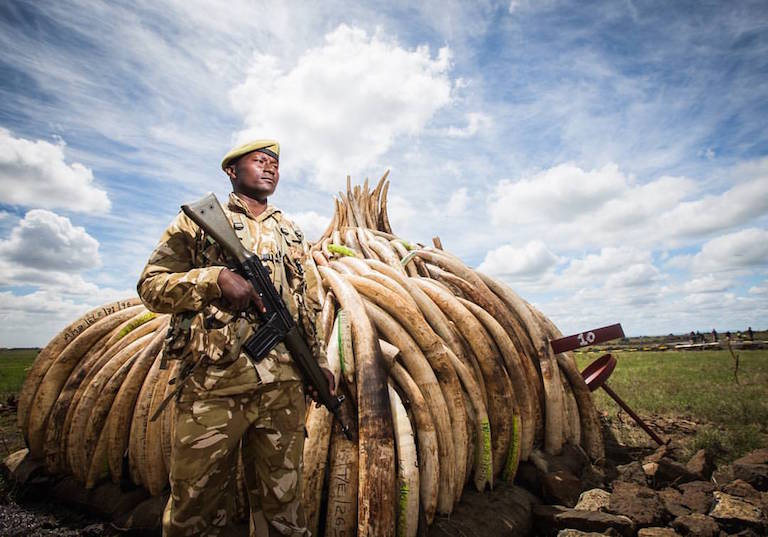- The Chinese government today announced it will close its domestic commercial ivory market by the end of 2017.
- Conservationists are applauding the move, calling it a “game-changer” for elephants, which are being rapidly driven toward extinction due to ivory poaching.
- Momentum has been building for such action. Earlier this year the United States enacted a law to close its ivory market and both the IUCN and member states at CITES COP17 passed resolutions to close domestic elephant ivory markets.

The Chinese government today announced it will close its domestic commercial ivory market by the end of 2017, a move conservation groups are calling a “game-changer” for elephants, which are being rapidly driven toward extinction due to ivory poaching.
“This is great news that will shut down the world’s largest market for elephant ivory,” said Aili Kang, Wildlife Conservation Society (WCS) Asia Executive Director, in a statement. “[This] will help ensure that elephants have a fighting chance to beat extinction.”
“This is a game changer for Africa’s elephants.”
Carter Roberts, President and CEO of World Wildlife Fund (WWF), added: “The large-scale trade of ivory now faces its twilight years, and the future is brighter for wild elephants. With the US also ending its domestic ivory trade earlier this year, two of the largest ivory markets have taken action that will reverberate around the world.”
China’s General Office of the State Council on Friday laid out a timeline for implementing the ban. By March 31, 2017, commercial processing and sale of ivory will be stopped. By the end of 2017, all trade will be barred. The government will step up law enforcement with the intent of curbing smuggling and illegal sales of ivory. China will also launch a public education and outreach campaign to “raise ecological civilization awareness, to guide the public to refuse to buy any ivory and ivory products, and to develop a good social environment to protect elephants and other wildlife,” according to a statement from the government.

Momentum has been building for such action. Earlier this year the United States enacted a law to close its ivory market and both the IUCN and member states at CITES COP17 passed resolutions to close domestic elephant ivory markets. China and Hong Kong have also taken steps to regulate and reduce the elephant ivory trade, including China’s pledge in 2015 to eventually shutter its ivory market and Hong Kong’s statement last week that it would end the ivory trade by 2021.
The news comes as elephant populations are plunging across Africa. A recent survey conducted over two years by the Great Elephant Census found that Africa’s savanna elephant population declined by 144,000 since 2007, equivalent to an population decline of eight percent per year. An earlier study reported that African forest elephant populations declined by 60 percent in just a decade.

Header image: A Kenyan ranger guards poached elephant tusks in preparation for the destruction of 105 tons of ivory and a ton of rhino horn in April. Photo by Mwangi Kirubi via Flickr (CC BY-NC 2.0)
